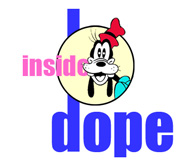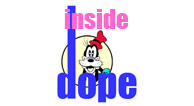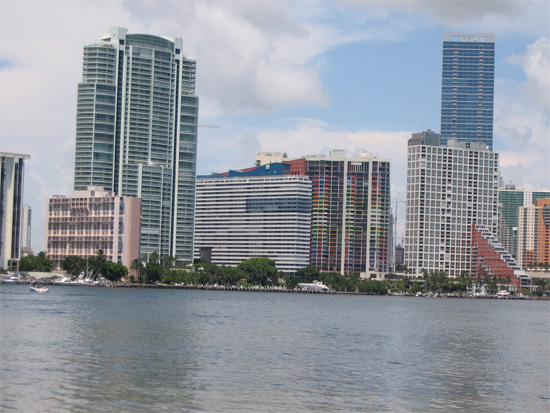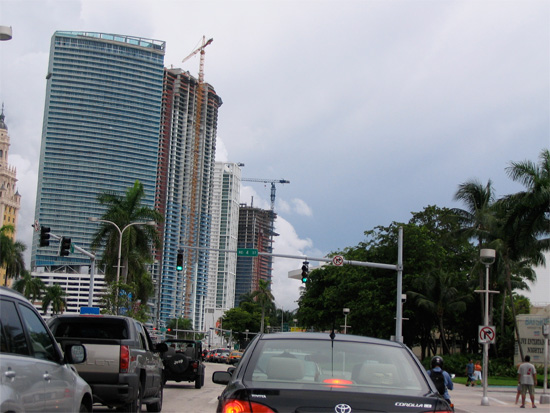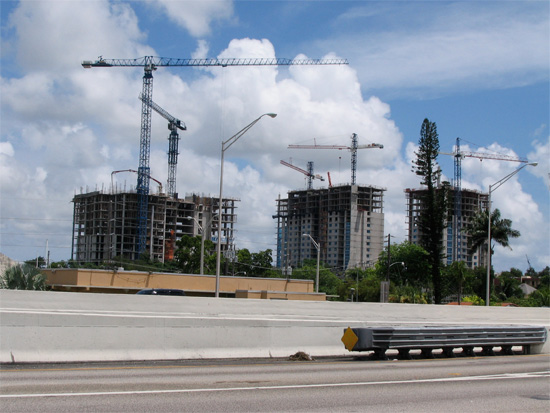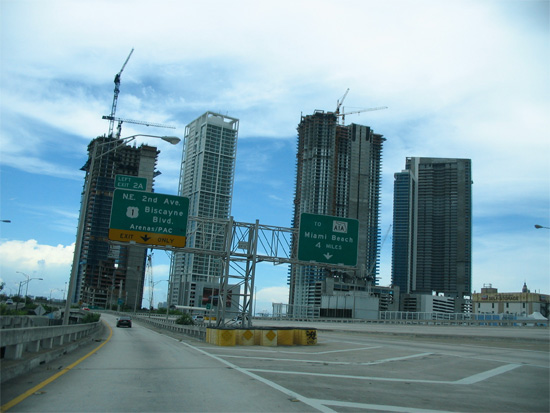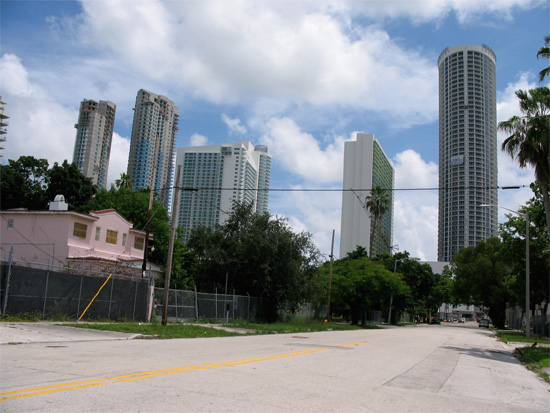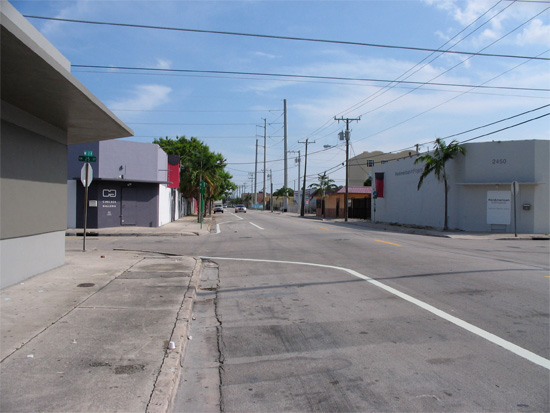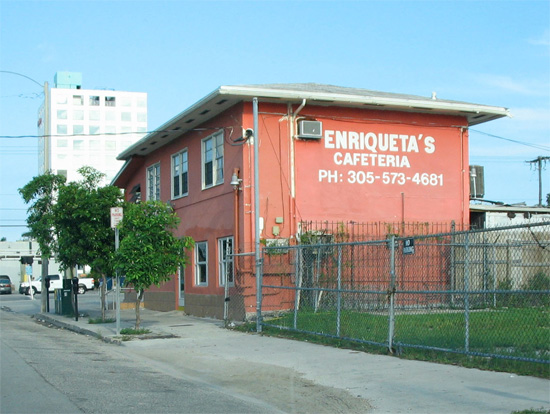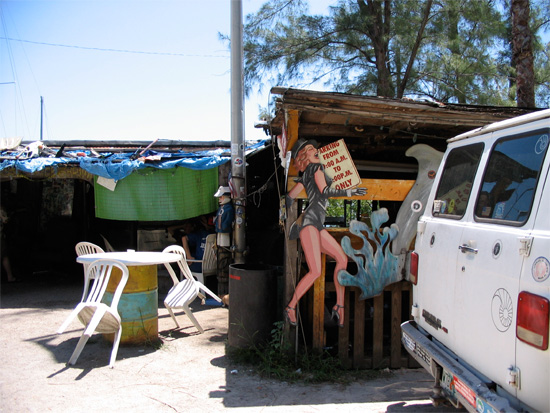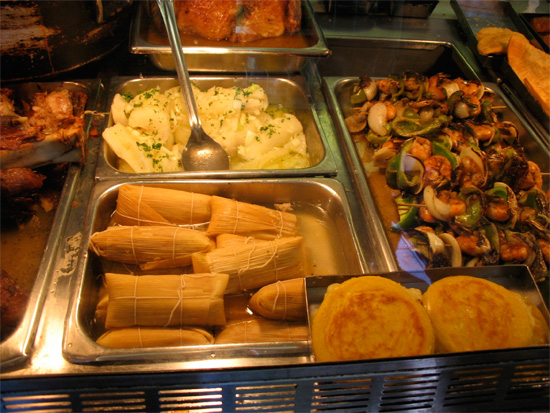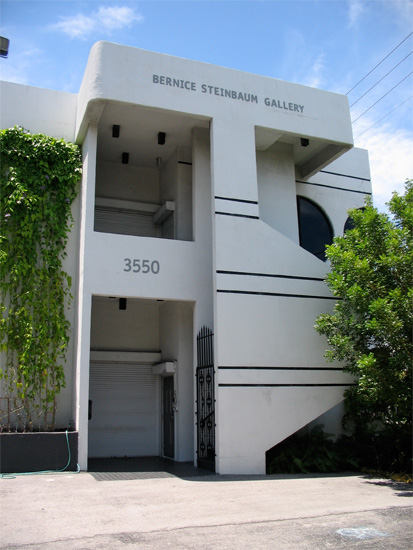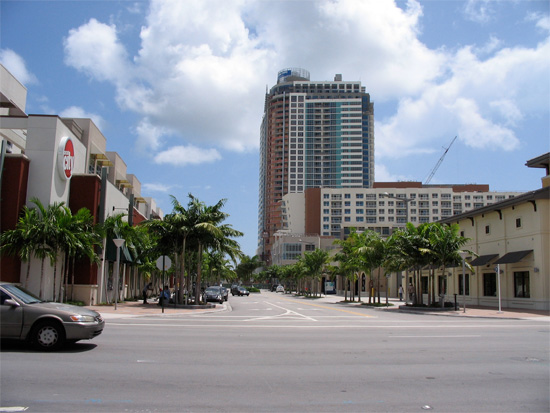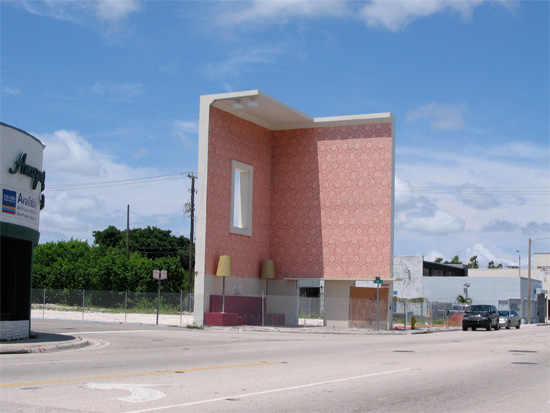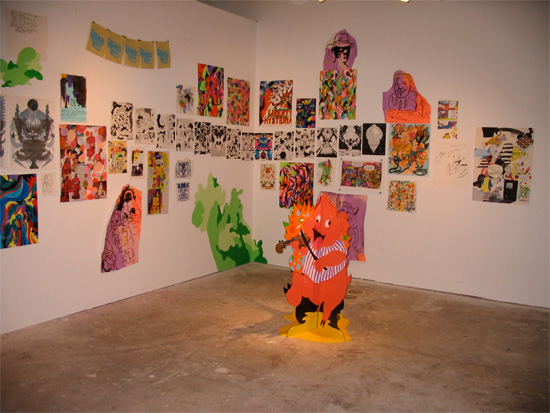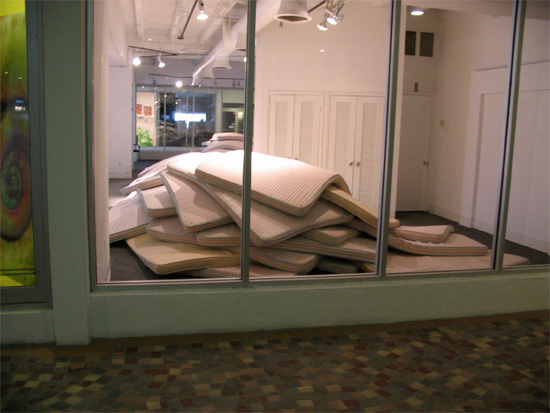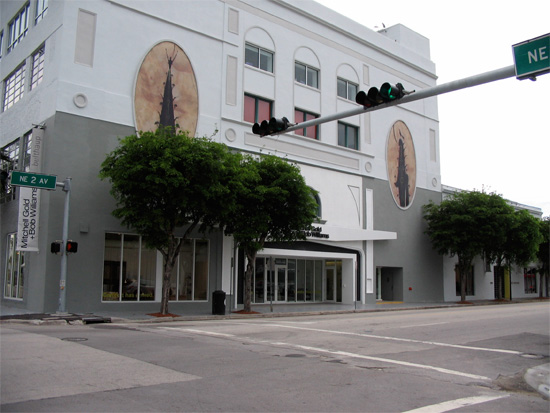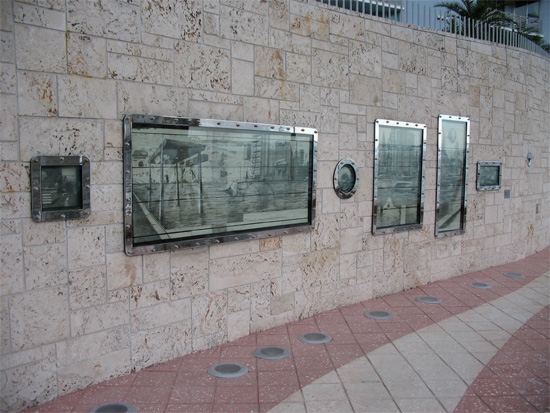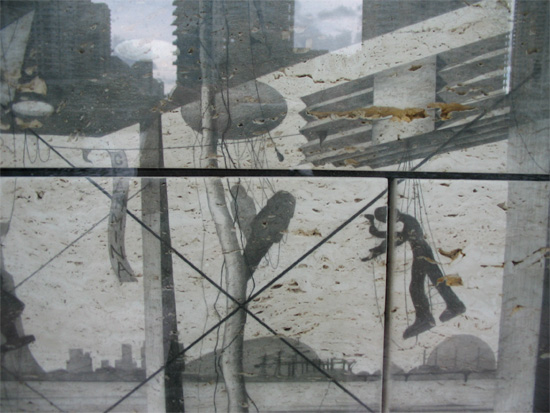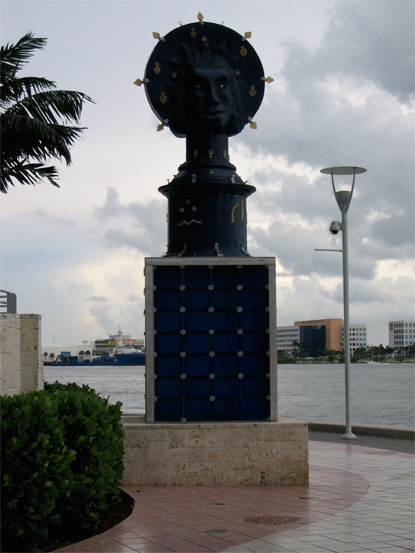|
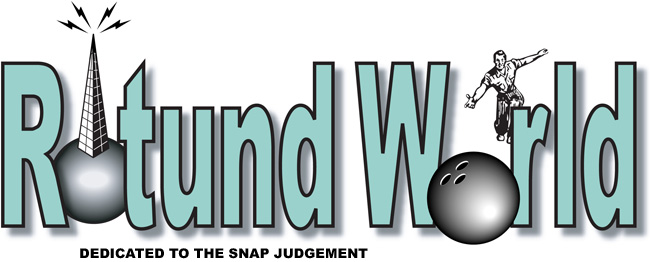
Happy, Shiny
When you revisit a place where you once lead a good, productive life, what makes the light bright and clear, the sky luminous, the streets alive with schemes and apparent purpose? Is it really possibility, or just a trick of memory? We recently spent a week in Miami where we lived for almost six years before decamping for Puerto Rico a couple of summers ago. It seems like eons. Seen a certain way, at just the right distance, the Miami of today is a teeming, sky-high toy metropolis, as appealing as a dream. It looks like a sleek urban pleasure craft for the twenty-first century’s captains of industry, or whatever they are these days: real estate moguls, no doubt, on-the-lam financiers from Venezuela, summering drug lords, homegrown art collector-pashas. But the newness quickly curdles. The skyline is changing at a dizzying rate everywhere you look, as in a Sally Cruikshank cartoon, historic enclaves crumbling beneath a looming nightmare of lofty cages for young moderns; fine if you want to live like a lab rat, but not so great if you long for a plot of grass with bromeliads. We hear that there are few takers for this grotesque overbuilding, and condos are actually being auctioned off. How nice to imagine developers suffering the pangs of Hell—one monstrosity in particular, a high-rise called Kubik which was supposed to overshadow our lovely old bayside neighborhood, Morningside, looked dead as a mackerel as we drove by, a dusty vacant lot with a crane— but no amount of their writhing in the fiery furnace, nothing but an atomic blast will undo the monstrous proportions that the city’s achieving. In its early stages, its headiest dream state days, the planning for Miami Art Museum’s move to the waterfront pictured Bicentennial Park as the terminus for a pedestrian-scale renewal of downtown, embracing a revived Overtown as one of its most ambitious goals. That was long, long before the grunters and the local weasels began to sniff the air and raise their morbid—and, as it turned out, prolonged—cries against the museum, and the inevitabilities of modern American urban development put an end to all that. “Pedestrian- scale” is hardly the way to describe how things have turned out. Witness the blocks across the street from where the museum will build itself, a dystopian barrier forever walling citizens off from one of their seats of culture. Below that is a view from the freeway leading into downtown, one heading to the beach, and the remnants of a bayside residential neighborhood.
Our visit often seemed like one long motorized drift through ongoing desolation. Who’s in charge here? It seems to be the same heedless moronocracy whose pockets were getting stuffed when we lived in Miami. The neighborhoods, like Miami’s burgeoning Wynwood, suffer no less from boomthink and ravagement, though torqued a different way. A neighborhood that was, not so long ago, admittedly rasty, even dangerously so—and therefore perfect for that incarnation of the art world which, for however brief a moment, was gloriously stoned, slacking, pretty much without commercial potential and so what; a party, in other words—is getting a makeover that’s rendering the place a grey, featureless “arts district,” redeemed only by a few discount shoe stores, Latin cafes, auto-body shops, and other remnants of the old days.
But we’re supposed to be talking about a lovely memory, right? A life well lived. We revisited some spots that in fact seemed little changed. We met up with Gean Moreno at Enriqueta’s, that 29th Street redoubt of Cuban breakfast and lunch, downed a clutch of flaky pastelitos with a bitter cafecito at Gilbert’s Bakery on Red Road, dropped in on the inimitably, timelessly seedy Jimbo’s out by Virginia Key, where beer is swilled and bocce balls tossed with bleary, snaggle-toothed abandon. We ended up at the Oasis Café in Key Biscayne, standing at the sweltering counter inside over a batch of freshly extruded churros con chocolate caliente. On Calle Ocho, it looks like Versailles will forever be a nexus for the aging stalwarts of exilio cubano, who pack the place after dark in their finery to remember the good times—sort of like us—and relish the ever-more imminent croaking of El Jefe.
Bernice Steinbaum Gallery looked just like it did when we left, though wearing a fresh coat of paint. But the view across the street was shocking to behold. When last we saw it, the several square blocks of vacant land outside Bernice’s gates was a fenced weed patch, and now it sports gigantic mutant growths like Target, Michael’s, Circuit City, and towering— and still-unsold, one imagines—condos.
A few blocks away, in the Design District, we visited the Moore space and the artists’ collective Bas Fisher Invitational. The district was once the bright promise of Miami’s artworld future, and indeed it had its moments, but once the art scene headed south, it seemed to settle into relative listlessness, a neighborhood of one interior design palace after another, where, if you knew where to look, you could find hidden crannies of artistic production. Apparently those momentary outbursts still exist, still occupying vacant spaces in search of paying tenants, but Rosie-Gordon Wallace’s Diaspora Vibe is almost alone among art galleries. Nothing symbolizes the fate of the Design District quite like The Livingroom, an architectural-scale installation by Roberto Behar and Rosario Marquardt which used two exterior walls of a remodeled one-story modernist building to pose a grandiose—and quite handsome—inquiry into scale, space, containment, and other metaphysical matters. It’s funny. As we drove up Miami Avenue away from Wynwood’s new consumerist cheese factory, we caught sight of The Livingroom and thought for a split- second, “Well, some things never change.” Then, alas, we espied the vacant lot where the building around it used to be. That disheartening vista appears below, followed by a shot of Mike Taylor’s installation at Bas Fisher Invitational, Animal Science, and below that Skip van Cel’s . . . now lie in it, in a separate space in the Buena Vista Building.
On the other hand, the warehouse on the corner of Northeast 39th Street and Second Avenue still has big José Bedia murals festooning its exterior walls like totems of a vanished indigenous culture. Bedia also participated in one of the most successful public art projects we’ve seen, One Miami Riverwalk. In addition to Bedia, Glexis Novoa, Michelle Weinberg, Liliana Porter, and Edouard Duval-Carrié, among others, created installations for a malecón where the Miami River empties into Biscayne Bay. Novoa’s works—exquisite police-state cityscapes on marble, sitting inside stainless steel framed porthole-like display cases— depict the newly built urban landscape as a baleful totalitarian wasteland of airborne fascistic monuments, surveillance cameras, and listening instruments, while reflecting the actual high-rises on the river’s opposite shore in their heavy glass fronts. He calls this collection of drawings N.E.O. (New Economic Order), and it interacts with its surroundings in a way that is both critical and gorgeous, something that few public artworks accomplish. We hope you’re as warmed as we are by the sight of Bedia’s monumental canvases, first image below, and the shots of Novoa’s installation that follow. Lastly, Duval-Carrié’s The Lady of Miami.
So Miami looks both considerably worse and better, depending on when you happen to look out the window. On balance, the list of things we found to like is far lengthier than our litany of woe. Surely we would bore the socks off our long-suffering visitors if we blabbed too much longer in this vein. We hope the abbreviated list on the following page will suffice to wrap things up. Read more about Miami, or relive our jolly poke at ENDI. |
